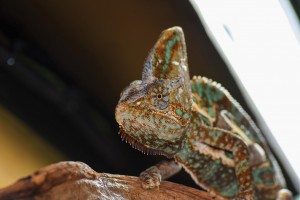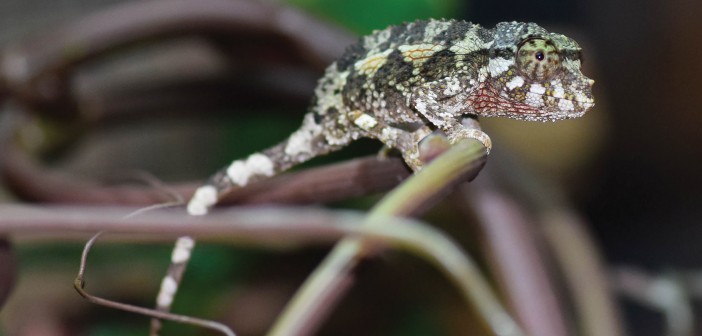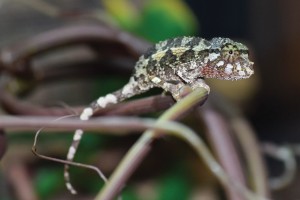By Lance Weeks
These old world lizards, all 160 species and counting, are one of the most misunderstood, yet amazing reptile species on the planet. Primarily found on the island of Madagascar, but also Asia, Africa and even the United States, their habitats range from tropical rain forests to west African deserts. They are a magnificent example of a species evolving to acclimate to their surroundings. Some of the more common names are veiled, panther (numerous types), Jackson’s (three horned), Parson’s (largest), Meller’s, pygmy leaf and many more are available to own and enjoy as household pets. However, only a few should be considered for pets, as most require specialized habitats or do not take to captivity well. The life expectancy ranges from three years to over 10 years in captivity, depending on the species and your commitment to meeting their needs.
These wonderful creatures have personalities varying from quite shy to very personable. Those shy traits can be altered with proper time spent allowing your chameleon to trust you, using slow movements, quiet conversation and hand feeding.
Their independent eye movement allows them to see 360 degrees around their body, while their sticky, long tongue gives them the ability to land a lick on the most unsuspecting food items. Their color speaks volumes as to their mood, temperature, humidity and surroundings. They are solitary lizards and only do well without the stress of a cage mate as adults. The rocking motion that comes with their slow yet deliberate travel is designed to mimic leaf motion in a breeze.
We do not recommend chameleons as your first reptile experience. Depending on the species, they have a wide range of specific habitat needs. They can be a little temperamental, but with correct information and habitat setup, they can and will provide you with many hours and years of visual excitement and interaction. Placement of the cage in your home and type of cage are crucial to providing your chameleon with an environment best suited for each species. Due to the wide variety of chameleons needs, always obtain a care sheet which is specific for your pet and talk to a knowledgeable reptile specialist about the best addition to your family.
 Every chameleon wants plenty of foliage for security, a basking branch to thermoregulate, and a variety of food items supplemented with calcium and a quality multivitamin. A water source for humidity and hydration is a must. All chameleons, except the pygmy leaf require a screened cage habitat, without air movement they can develop respiratory problems. Veiled chameleons are the only species that eat plant matter.
Every chameleon wants plenty of foliage for security, a basking branch to thermoregulate, and a variety of food items supplemented with calcium and a quality multivitamin. A water source for humidity and hydration is a must. All chameleons, except the pygmy leaf require a screened cage habitat, without air movement they can develop respiratory problems. Veiled chameleons are the only species that eat plant matter.
To best enjoy your new pet chameleon, take your time from a far to observe it, allowing her to learn that you are not a danger at the same time.
Lance Weeks is the owner of Living Safari, a pet store in Sandy, UT that specializes in exotics. The store has a nocturnal room where you can see some of their nocturnal animals in a moonlit environment. Kahuna, his veiled chameleon, greets visitors at the door.




